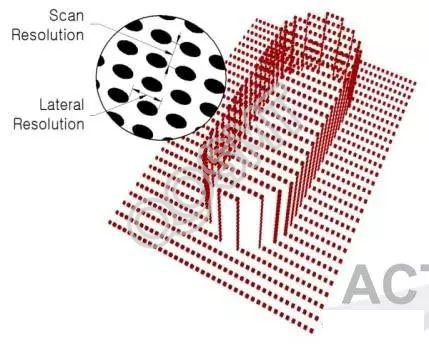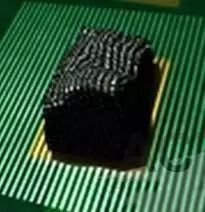The principle and detection method of 3D SPI
Mar 06, 2023


SPI (SolderPaste Inspection) refers to the solder paste inspection system, the main function is to detect the quality of solder paste printing, including body
Product, Area, Height, XY Offset, Shape, Bridge, etc. How to quickly and accurately detect extremely small solder paste, generally use PMP (Chinese translation is
Phase Modulation Contour Measurement Technology) and Laser (translated into Chinese as Laser Triangulation Technology) detection principle.
1. Laser triangulation technology
The detection light source used is laser, the distortion generated by the laser beam at different height planes, the detection head moves continuously in a certain direction, and the camera moves according to the setting
Take photos at regular time intervals to obtain a set of laser distortion data, and then perform calculations to obtain test results (as shown in the figure below).

Advantages: faster detection speed
Disadvantages: 1) The laser resolution is low, generally only 10 - 20um level.
2) Single sampling, low repeatability accuracy.
3) Sampling during motion, external vibration and transmission vibration have a great influence on the detection.
4) The monochromatic light of the laser has weak adaptability to the color of the PCB board.
Market status: Laser technology has gradually withdrawn from the SPI industry. At present, Parmi in South Korea is still using laser technology (dual laser technology)
2. PMP phase modulation profile measurement technology
1. Use a white light source to measure the solder paste through the phase change of the structured grating (see the figure below)

2. Using the gray level change measurement of the structured grating to obtain a high-precision height value (see the figure below)
3. Using phase changes, each solder paste is sampled 8 times to ensure high repeatability of detection (see the figure below)
4. PMP technology is divided into two detection methods: FOV stop-and-go and Scan scanning
4.1 FOV stop-and-go
When the detection is in progress, there is no sampling during motion, and no motion during sampling. The impact of vibration on detection is minimized.
Advantages: 1) The PMP principle has a high detection resolution of 0.37um. 2) Stable multiple sampling, high detection repeatability accuracy. 3) For PCB
Not fussy about color.
Cons: Relatively slow.
Market: It is recognized as the best solution for SPI by the industry due to its stable detection effect, foreign brands represented by Korea KohYoung.
4.2 Scan scanning
The phase change of the structured grating is formed by the continuous movement of the detection head. Sampling while in motion.
Advantages: 1) The PMP principle has a high detection resolution of 0.37um. 2) Not picky about PCB color. 3) Multiple sampling, detection repeatability is higher than excitation
Light type equipment. 4) The detection speed is faster than the FOV stop-and-go type.
Disadvantages: The impact of external vibration is greater, and the detection repeatability is low.
Market: Taiwan brands represented by Taiwan TRI, and foreign brands represented by Cyber.
3. Programmable structured light grating (PSLM)
Programmable structured light grating (PSLM): realizes the software control of the structure light grating motion, avoiding the traditional piezoelectric ceramic motor (PZT) to drive the glass
The mechanical device necessary for the moiré grating reduces mechanical wear and customer maintenance costs.
Using advanced phase profile modulation measurement technology (PMP), 8-bit grayscale resolution, up to 0.37 micron detection resolution, compared with laser
The measurement accuracy has been improved by 2 orders of magnitude, and the detection ability and application scope of the equipment have been greatly improved.
picture
